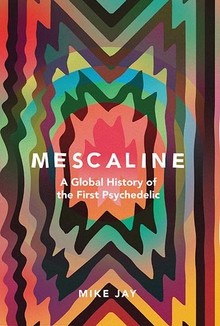In the vibrant resurgence of psychedelic research and interest, one of the original psychedelics, mescaline, is often overlooked. While LSD, psilocybin, DMT, ketamine, and MDMA are frequently discussed for their potential in psychotherapy and mental well-being, mescaline receives comparatively little attention. Yet, it was mescaline that inspired the term “psychedelic” in 1954, following Aldous Huxley’s initial experience with the substance. Today, with an unprecedented exploration of numerous novel psychedelic compounds, why has mescaline faded into relative obscurity?
The term “psychedelic” originated from a correspondence between Aldous Huxley and psychiatrist Humphry Osmond, who provided Huxley with mescaline for his experiment at his Hollywood Hills home in May 1953. Huxley’s essay, The Doors of Perception (1954), which detailed his experience, ignited the psychedelic era. At the time, terms like “psychotomimetic” and “hallucinogen” were used for such drugs, linking their effects to mental disorders. However, Huxley argued that the mescaline experience was not a psychotic episode but a transcendent state, a connection with a greater consciousness.
Of the two original psychedelics, LSD was the newer discovery. Its mind-altering properties were first identified by Swiss chemist Albert Hofmann in 1943, and it was still a relatively unexplored research chemical. In contrast, mescaline had a well-established history. It was first isolated from the peyote cactus in 1897, following detailed descriptions of its hallucinatory effects by scientists and literary figures such as Silas Weir Mitchell, William James, and Havelock Ellis.
 Peyote cactus containing mescaline
Peyote cactus containing mescaline
Alt text: Close-up of a peyote cactus, a natural source of mescaline, showcasing its distinct button-like appearance and green color.
The Rise and Fall of Mescaline
Mescaline was first synthesized in the lab in 1919, and from 1920, mescaline sulphate was commercially available as a pure drug from European pharmaceutical suppliers like Merck. Psychologists and neurologists, mainly in Germany, conducted trials on many subjects, resulting in extensive reports of intense visions, unusual sensations, and profound revelations. Avant-garde painters experimented under its influence, and philosophers like Jean-Paul Sartre and Walter Benjamin were administered mescaline under clinical supervision. By the 1950s, with a shift towards biomedical approaches in psychiatry, mescaline was widely used in schizophrenia research, which is how Huxley encountered it.
Psychiatrists and pharmacologists noted the significant similarities between mescaline and LSD intoxication. Albert Hofmann observed that LSD’s effects closely mirrored the commonly understood effects of mescaline. The primary difference lay in the dosage. LSD was considerably more potent: a gram of mescaline provided approximately three doses, while a gram of LSD contained thousands. This made LSD more appealing to researchers studying the brain, as it appeared to act with greater precision on the brain mechanisms involved. Additionally, it was more cost-effective. Even as The Doors of Perception popularized mescaline, LSD was quietly replacing it.
After 1962, when the Federal Drug Administration increased regulations on psychedelic research, there were few compelling reasons to continue working with mescaline. LSD became the dominant substance in a shrinking field. By the mid-1960s, illicit LSD appeared on the streets, where its high potency translated to greater profits than mescaline for similar risks. Mescaline maintained a certain allure, particularly for those introduced to psychedelics through The Doors of Perception. It was occasionally produced for a niche market by underground chemists who weren’t driven by profit. Both substances were prohibited for non-clinical use in 1965. Afterwards, LSD was cheap and widespread, while mescaline became a substance of legend.
Mescaline’s Legacy: From MDMA to Today
Arguably, the most significant mescaline trip of the 1960s was that of chemist Alexander Shulgin, who later wrote that it “unquestionably confirmed the entire direction of my life.” He was struck by the limited research on compounds with similar structures, and he began synthesizing new ones, including 3,4-methylenedioxymethamphetamine, or MDMA, which became known as “ecstasy” on the underground drug market.
Alt text: Portrait of Alexander Shulgin, a chemist whose mescaline experience led him to synthesize new psychoactive compounds like MDMA.
In many ways, MDMA was a more manageable version of mescaline for the new chemical generation. Its effects lasted three or four hours, compared to mescaline’s demanding ten to twelve. Its psychedelic effects were less disorienting, and its physical effects were more euphoric. Shulgin went on to synthesize many similar compounds, many of which have found a place in today’s expanding market of novel psychoactive substances. While mescaline itself may have become rare, its influence is strongly felt in twenty-first century drug culture.
Mescaline Today
Today, pure mescaline is indeed rare. Pharmaceutical companies such as Merck and Sigma-Aldrich still supply it, but it is tightly regulated, and its uses are mainly limited to forensic analysis and criminal toxicology. It can sometimes be found for sale on dark web marketplaces, along with a variety of designer psychedelics. It retains a legendary status in psychedelic culture thanks to The Doors of Perception and Fear and Loathing in Las Vegas, where Hunter S. Thompson portrayed it as the ultimate psychedelic experience. It is a psychedelic that many have heard of but few have tried.
Conversely, the use of mescaline-containing cacti, such as the San Pedro of the Andes and the peyote of northern Mexico and southern Texas, is increasing. The Native American Church, which uses peyote as a sacrament, is flourishing, with over a quarter of a million members. San Pedro curanderos or shamans, who were previously found only along the coasts of Peru and Ecuador, are now found from California to Goa and Ibiza to Thailand. In the century since it was first synthesized, mescaline has transformed from a scientific and popular sensation to near extinction. The cacti, used for millennia before the drug was extracted, are poised for continued use.
Further Reading: High Society: Mind-Altering Drugs in History and Culture and The Atmosphere of Heaven by Mike Jay.